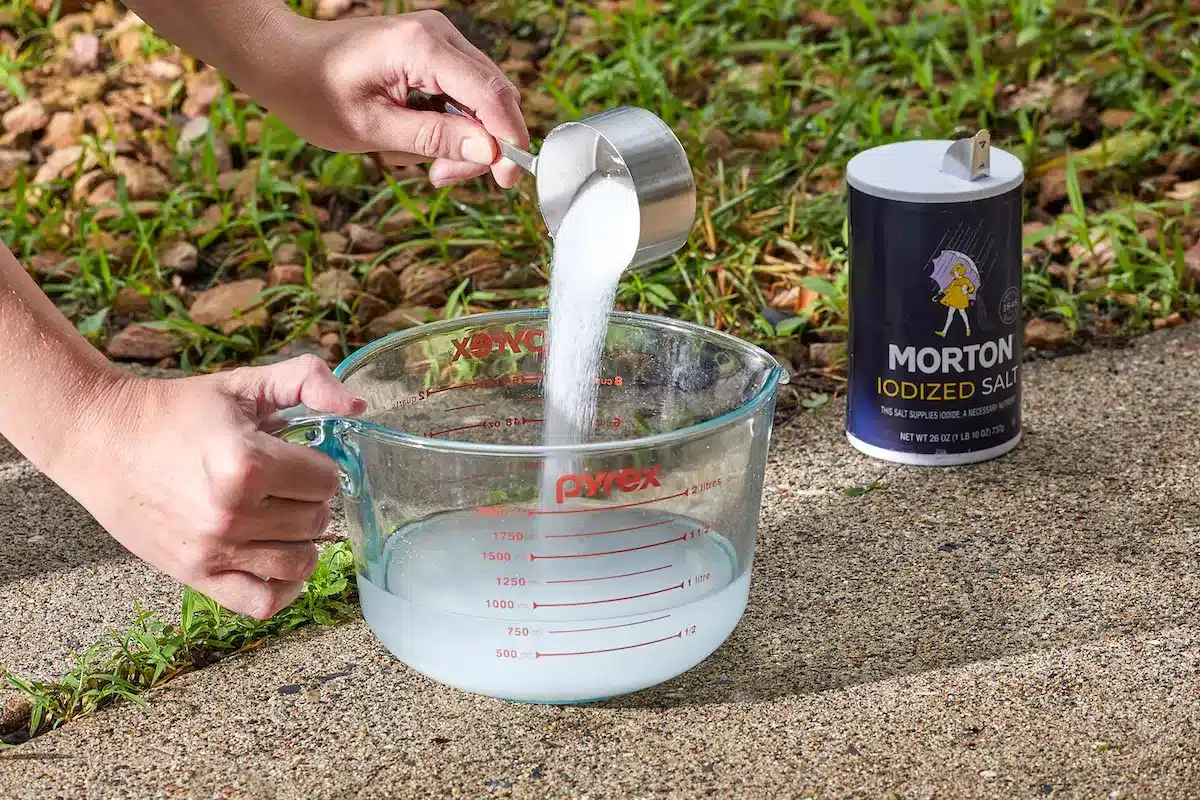Many gardeners wish for spotless patios or pathways, free from persistent weeds. When searching for an easy, reliable, and affordable solution at home, common kitchen staples like salt often come to mind. Thanks to its well-known effectiveness and low cost, salt is frequently chosen as a homemade weed killer by those seeking a cheap yet powerful option. Explore how salt works as a weed killer, discover the preparation steps, and understand both its strengths and significant drawbacks.
Why salt works as a powerful weed killer?
The reputation of salt as weed killer stems from its ability to destroy unwanted plants right at the cellular level. Unlike boiling water or manual weeding, salt provides lasting—sometimes overly persistent—results. Knowing what happens when sodium infiltrates plant tissues helps explain why this basic ingredient turns any diy herbicide into a dramatic, fast-acting solution.
Sodium in salt draws moisture out of plant tissues, resulting in rapid dehydration. This process makes leaves wrinkle just days after treatment. As roots absorb the dissolved salt, essential minerals such as potassium, calcium, and magnesium are replaced by sodium ions. This causes nutrient imbalances and oxidative stress inside plant cells, quickly leading to wilting and death.
Multiple effects on plant physiology
The destructive power of salt-based weed killer goes far beyond simple drying. By disrupting nutrient absorption, sodium starves plant roots through mineral substitution. Even tough perennial weeds struggle once their micronutrients vanish. Over several days, brown, shriveled leaves reveal that recovery is unlikely.
Some recipes intensify these effects by including vinegar in weed killer solutions or adding dish soap. The soap breaks down surface oils, allowing salt to cling better to foliage, while vinegar’s acidity accelerates tissue damage. Occasionally, ingredients like Epsom salt or lemon juice are used to enhance penetration and drying, though regular table salt remains most effective.
Nutrient imbalance and long-term persistence
A single generous application of a salt-based weed solution can linger in the soil for months, or even years, significantly altering its chemistry. While immediate results may seem appealing, this lingering effect poses real problems for those wishing to maintain healthy, fertile areas in the future.
This disruption extends well beyond weeds. Essential soil microorganisms necessary for nutrient cycling and decomposition begin to die off rapidly. Over time, these barren spots expand, turning previously vibrant garden soil into sterile ground where little more than moss survives.
My homemade recipe: making a cheap, powerful weed killer with salt
For those intent on using salt despite its risks, creating a cheap weed killer at home is simple and extremely cost-effective compared to commercial products. Combining familiar household items produces a solution strong enough to tackle stubborn weeds, especially useful for cracks in driveways or along gravel paths.
This natural weed killer recipe uses four basic ingredients found in most kitchens: water, plain table salt, white vinegar (optional), and a small amount of dishwashing liquid. Epsom salt can be substituted, but standard sodium chloride generally delivers the quickest results.
- 2 cups of salt (preferably finely ground)
- 1 liter of hot water
- 250 ml white vinegar (for enhanced penetration, optional)
- 1–2 tablespoons dish soap or dishwashing liquid
Begin by heating the water until steaming, then stir in the salt until fully dissolved. If using vinegar in the solution, add it now, mixing thoroughly. Finally, incorporate the dishwashing liquid, which helps the salty mixture stick to weed leaves by breaking surface tension.
Let the mixture cool, pour it into a spray bottle, and generously apply it to exposed foliage on dry, sunny days. Within hours, leaves should start yellowing and wilting, indicating severe dehydration and cell damage.
Dangers and environmental impact of salt-based weed killers
While a powerful homemade weed killer with salt can eradicate weeds, it comes at a significant cost to surrounding life. Salt’s remarkable staying power transforms short-term benefits into long-term hazards for local ecosystems, especially when used in large amounts or near lawns, ornamental beds, or trees.
Unlike organic acids that fade quickly, salt remains chemically active far beyond a single season. Rainfall can carry sodium deeper into the subsoil, where tree roots might absorb harmful quantities—even if the original application was some distance away. Shrubs, ornamentals, and established trees may lose vitality or die due to accumulated toxicity long after the initial treatment.
Soil health and fertility loss
Repeated use of concentrated salt brine continually disrupts crucial underground cycles. Many beneficial bacteria and fungi cannot survive in saline environments, so microbial populations shrink dramatically. Without these organisms, soil aeration decreases and decomposition slows, leaving behind compacted earth lacking nutrients needed for healthy plant growth.
Persistently salted areas resist colonization by new seedlings—including desired flowers or ground covers. Without intervention, these patches remain lifeless, reducing the value and visual appeal of garden spaces for years.
Risks to groundwater and neighboring greenery
Another major risk surfaces during heavy rainfall. Dissolved sodium travels far from where it was applied, potentially contaminating wells or underground water reserves. Sensitive vegetation, even at a distance, can be harmed as roots absorb tainted water.
Undoing the side effects proves challenging. Restoring affected land requires extensive dilution with irrigation and abundant rain—a difficult or unrealistic option in drier climates. Any careless overspray or runoff puts cherished shrubs, perennials, and mature trees at risk.
Greener alternatives to salt for natural weed control
Given the considerable harm caused by salt as weed killer, it is wise to consider environmentally friendly approaches for maintaining gardens and landscapes. Several practical methods exist to prevent or remove weeds without damaging soil structure or polluting water sources.
Mulching is a top choice for many gardeners. Layers of bark, straw, or cardboard block sunlight, drastically reducing weed seed germination. Regular manual weeding prevents annual weeds from seeding and allows targeted removal before roots become deeply established. These strategies offer ongoing control without threatening other plants.
Thermal weeding and false sowing methods
Thermal weeding, using heat from a flame or hot steam, damages plant cell structures and causes immediate wilting. With no chemical residue left behind, soil quality stays intact, supporting quick replanting whenever desired.
False sowing appeals to those who prefer proactive measures. Preparing beds as if planting crops encourages dormant weed seeds to sprout; these early weeds are then removed before actual sowing, resulting in cleaner rows and less work later in the season.
Combining strategies for success
No single method guarantees total freedom from weeds. By combining mulch, routine cultivation, hand-weeding, and occasional targeted applications of vinegar-based weed killer, one achieves healthier and more sustainable results. Preventative action always minimizes harm compared to drastic restoration efforts after soil has been sterilized.
Choosing environmentally conscious practices over chemical-heavy or salt-laden solutions rewards gardens—and future harvests—with fertile soils, thriving plants, and confidence that every step taken builds, rather than depletes, natural beauty and productivity.








